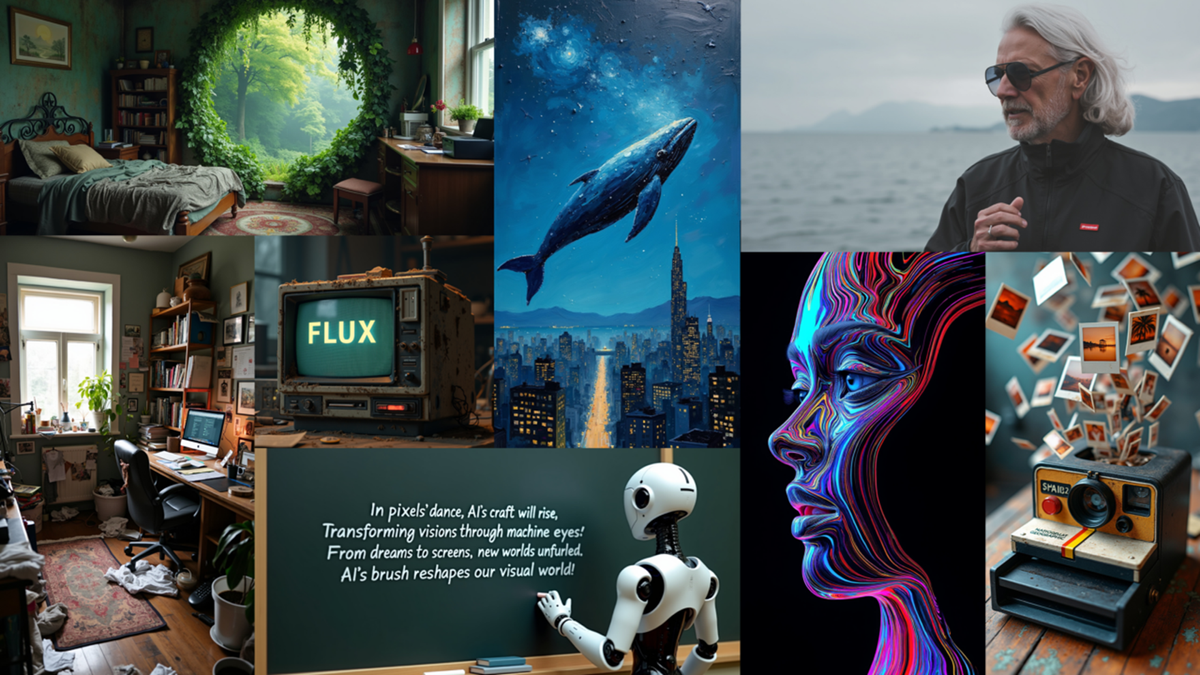A new AI image generator called Flux.1 has appeared on the scene and is quickly gaining praise for its high-quality results and the fact that it is an open-source model. Flux was created by Black Forest Labs, whose founders previously worked at Stability AI, the creator of the popular Stable Diffusion line of AI image models.
The Flux model suite is considered by some to be the successor to Stable Diffusion and arguably a game-changer for affordable, high-quality generative AI tools.
There are three versions of Flux.1: Pro, Dev, and Schnell, in descending order of size. The Pro version is designed for commercial use and is already being adopted by companies to offer generative AI imaging services to their subscribers. The Dev and Schnell versions are optimized for different levels of performance and speed.
What sets Flux apart from Midjourney, Stable Diffusion, and many of their competitors? In particular, the two smaller models can run on reasonably good hardware, such as high-performance laptops. This makes it more accessible to a wider range of users, including hobbyists, developers, and small businesses that may not have the resources to invest in more expensive proprietary tools. It also means that you don’t have to rely on internet access or cloud storage to run Flux. And, while Midjourney has been praised for its ability to create highly detailed and visually appealing images, Flux claims to offer some distinct advantages, particularly in rendering human figures. Black Forest Labs is now working on adding a text-to-video model to its portfolio.
“Our mission, deeply rooted in the generative AI research community, is to develop and advance cutting-edge generative deep learning models for media like images and video, and push the boundaries of creativity, efficiency, and diversity. We believe generative AI will be a foundational element of all future technologies,” Black Forest Labs explained on its blog. “By making our models available to a broad audience, we want to bring their benefits to everyone, educate the public, and improve trust in the safety of these models. We are determined to build the industry standard for generative media.”
We are excited to announce the launch of Black Forest Labs. Our mission is to develop and advance next-generation generative deep learning models for media and push the boundaries of creativity, efficiency, and diversity. pic.twitter.com/ilcWvJgmsXAugust 1, 2024
How to get and use Flux
For those interested in exploring Flux, there are several ways to access and use the model. If your computer is good enough, you can download and run Flux.1 locally. Additionally, Flux is open source and supports multi-model platforms, which significantly expands its availability.
AI imaging platform NightCafe has already integrated the Flux.1 model, allowing users to compare its results directly with those of other models such as Ideogram and Stable Diffusion 3.
Similarly, Poe offers a chatbot-style interface for generating images using Flux.1. For those with a bit more technical knowledge, Flux.1 can also be accessed through Hugging Face and other open-source AI model hubs.
You may also like









